In the annals of design, there have been countless chair typologies. The chair is (at least in the West) one of the most ubiquitous but intriguing forms of design. By and large, a chair can be classified as a useful object—a thing on which to sit—with a form that is on a scale from aesthetic to unsightly. Setting any unsightly chairs to one side, this article offers a digest of twenty classic and contemporary design chairs. We’ve chosen these iconic design chairs for their aesthetic appeal, utility, originality, quality, and longevity. To quote the prolific chair maestro Hans J. Wegner from 1952: “If only you could design just one good chair in your life . . . But you simply cannot.” And so, here are twenty good chairs.
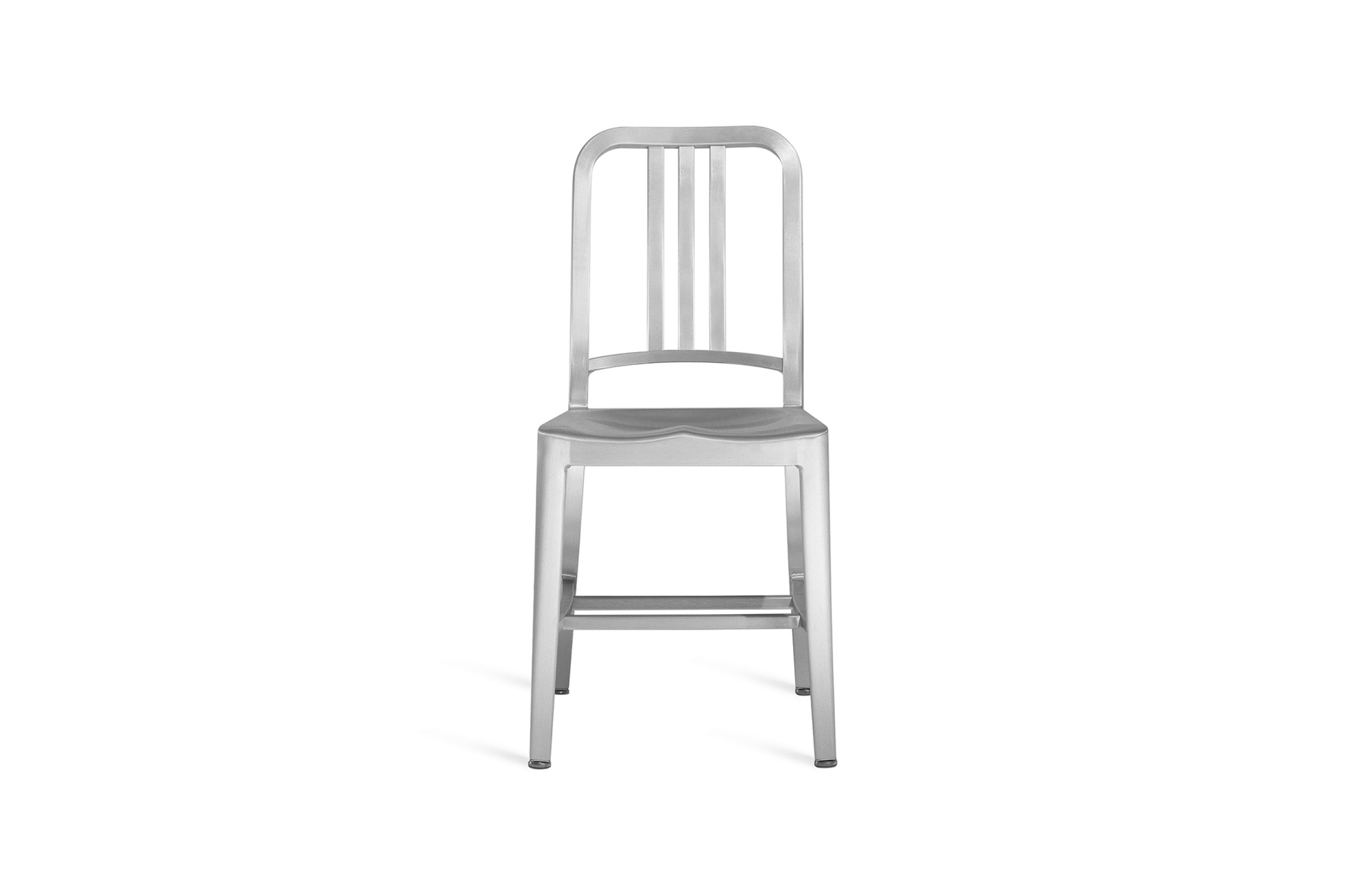
1006 Navy Chair
Make a lightweight, long-lasting chair for the US Navy, one that will withstand salt water, salt air, and burly sailors. That was a precis of the task given to Wilton C. Dinges who founded Emeco (Electric Machine and Equipment Company) in Hanover, Pennsylvania, in 1944. Working with Alcoa, a producer of aluminum, Dinges designed the 1006 Navy Chair that same year. With an abundance of salvaged aluminum, the Navy Chair was crafted using a comprehensive 77-step process. The seat was hand-formed, welded, tempered, and anodized, transforming ordinary aluminum into something extraordinarily strong. Today, Emeco continues to make these iconic chairs at its factory in Hanover. Combining fine craftsmanship and a lot of elbow grease, the chair is guaranteed to last at least 150 years.
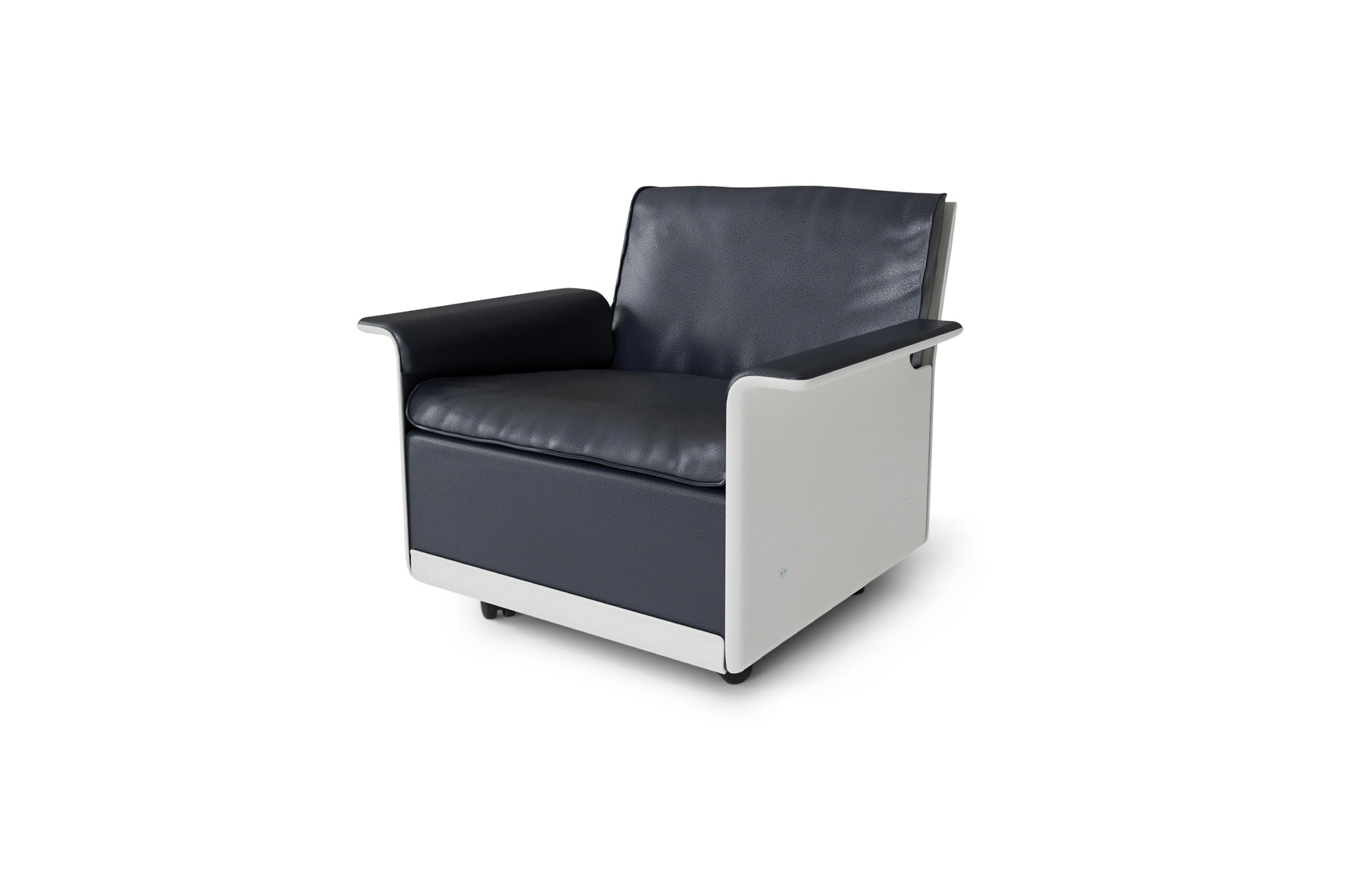
620 Chair Programme
The eminent German industrial designer Dieter Rams designed the 620 Chair Programme as a modular kit of parts (start with a chair, then add another to make a sofa). Originally named RZ 62, it has been handmade by Vitsœ since 1962. In creating the 620 Chair Programme, Rams developed a functional piece of furniture with a largely organic quality. He wanted to ‘achieve the comfort of a classic armchair while remaining visually light’. Today, whether they’re upholstered in linen or leather, with a swivel base, feet, or castors, the 620 design chairs remain a uniquely modern classic.
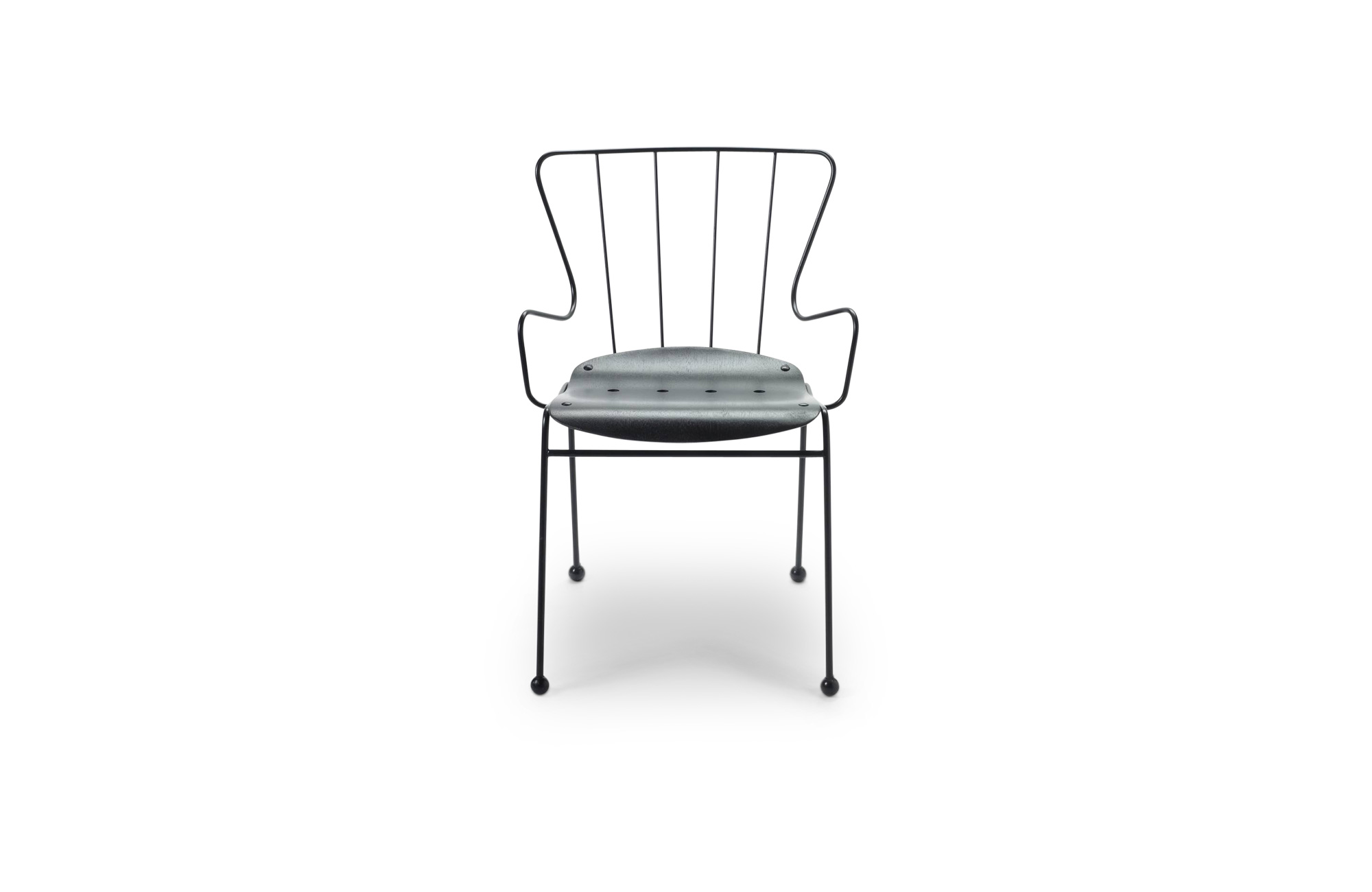
Antelope chair
British designer Ernest Race designed the Antelope chair in 1951—it was selected as the chair for ‘The Festival of Britain’ at the exhibition’s location on London’s South Bank. Considered a fine example of post-war chair design, the Antelope was described as a chair that ‘expresses a whimsical and almost frivolous optimism rare in other international designs from the early 1950s.’ Made up of a Gabon ply seat, steel rod frame, and atomic-like ball feet, the Antelope chair was awarded a silver medal at the Salon del Mobile in 1955 (a first for British furniture design). Today, it remains a curious and quaint British design classic.
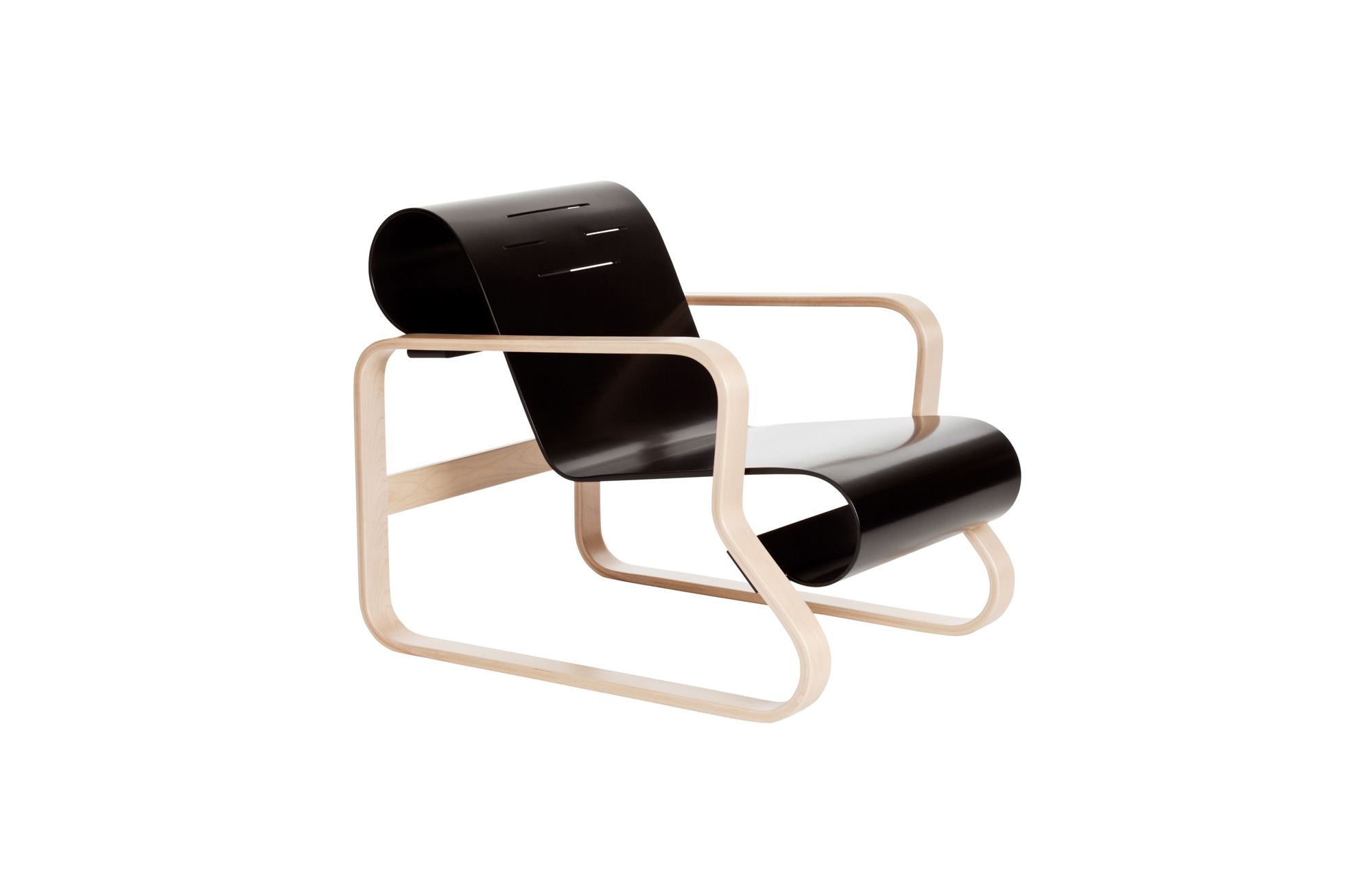
Armchair 41 ‘Paimio’
In 1929, the renowned Finnish architect and designer Alvar Aalto won a commission to design the Paimio Sanatorium. An isolation hospital for patients with tuberculosis, the facility was located in the Finnish city of Paimio. Aalto’s functional but humane design capitalized on the area’s surrounding nature and promoted patient well-being. His Armchair 41 ‘Paimio’ was created in 1932 for the sanatorium’s interior, with the express purpose of helping to ease a patient’s breathing. Made by Artek, the iconic chair’s organic shape is a reinterpretation of the classic club chair. With a suspended seat that appears to float, it offers a high degree of elasticity. On the eve of its 90th anniversary, Aalto’s Armchair 41 ‘Paimio’ remains a striking but also timeless design. Consequently, its form perfectly suits many of today’s contemporary spaces.
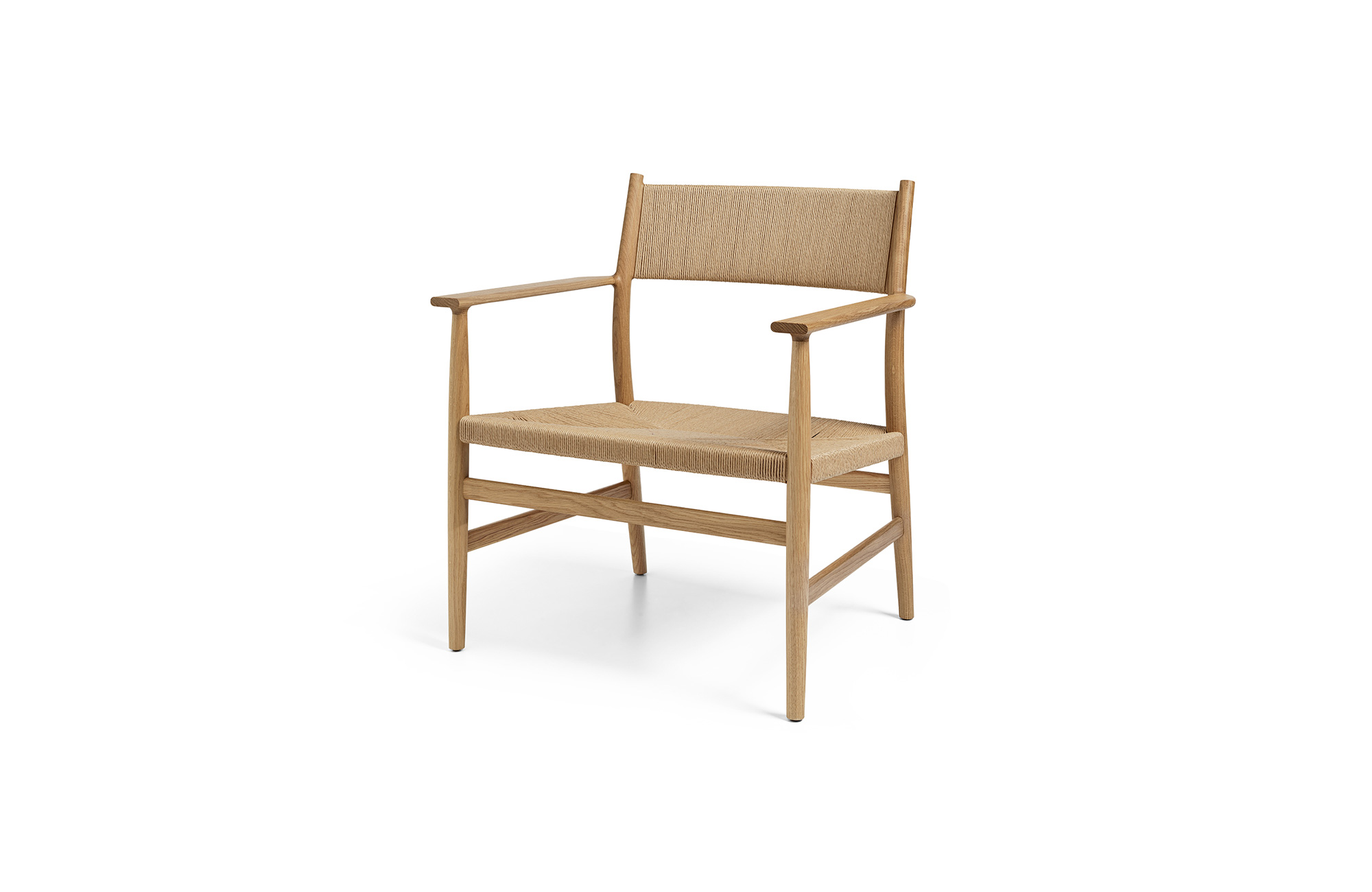
ARV Lounge Chair
Brdr. Krüger was founded as a woodturning workshop in 1886 by brothers Theodor and Ferdinand Krüger. Today, this fifth-generation Danish heritage brand combines an enduring approach to craftsmanship with a flair for contemporary design. Brdr. Krüger collaborated with Danish designer David Thulstrup to reimagine the brand’s award-winning ARV Chair (originally designed for restaurant noma), as a refined lounge chair. With the ARV Lounge Chair, Thulstrup designed a well-proportioned seat that ‘accommodates the body to rest in the sense of observing or receiving the space around you.’ It is a fine example of wood craftsmanship combined with modern-day innovation.
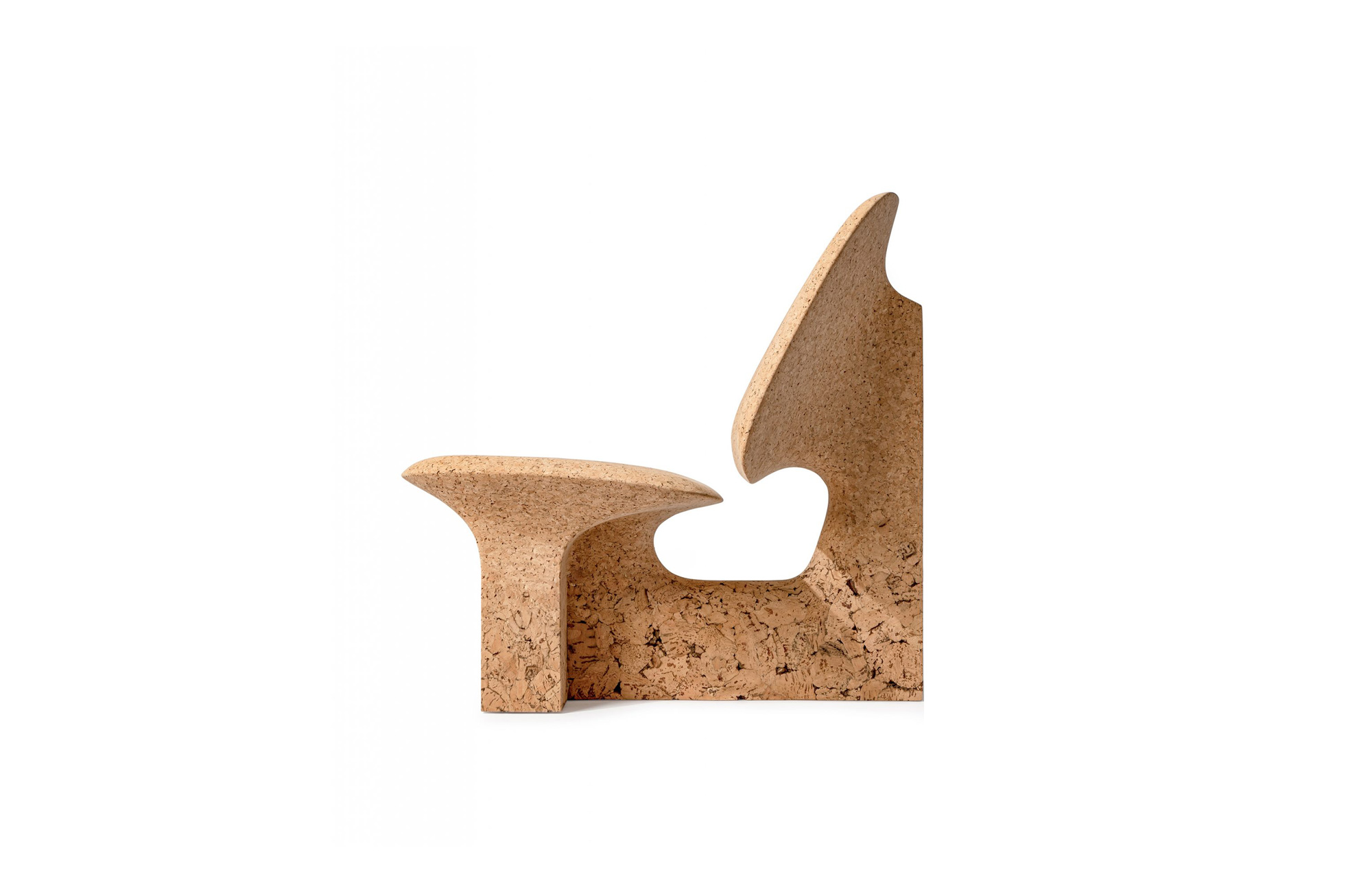
Burnt Cork Lounge Chair
Lisbon-based Made in Situ is a project conceived in 2020 by French designer Noé Duchaufour-Lawrance. In his work, Duchaufour-Lawrance is particularly fascinated by the possibilities that arise when combining heritage, materials, natural shapes, and craftsmanship. Made in Situ presents collections that contain a limited number of design chairs. In its second collection, ’Burnt Cork’, Duchaufour-Lawrance pays tribute to this prized Portuguese material, recognizing its resilience. The Burnt Cork Lounge Chair is a sculptural feat as well as a poetic expression of a contemporary chair. It’s a natural choice for our selection of classic and contemporary design chairs.
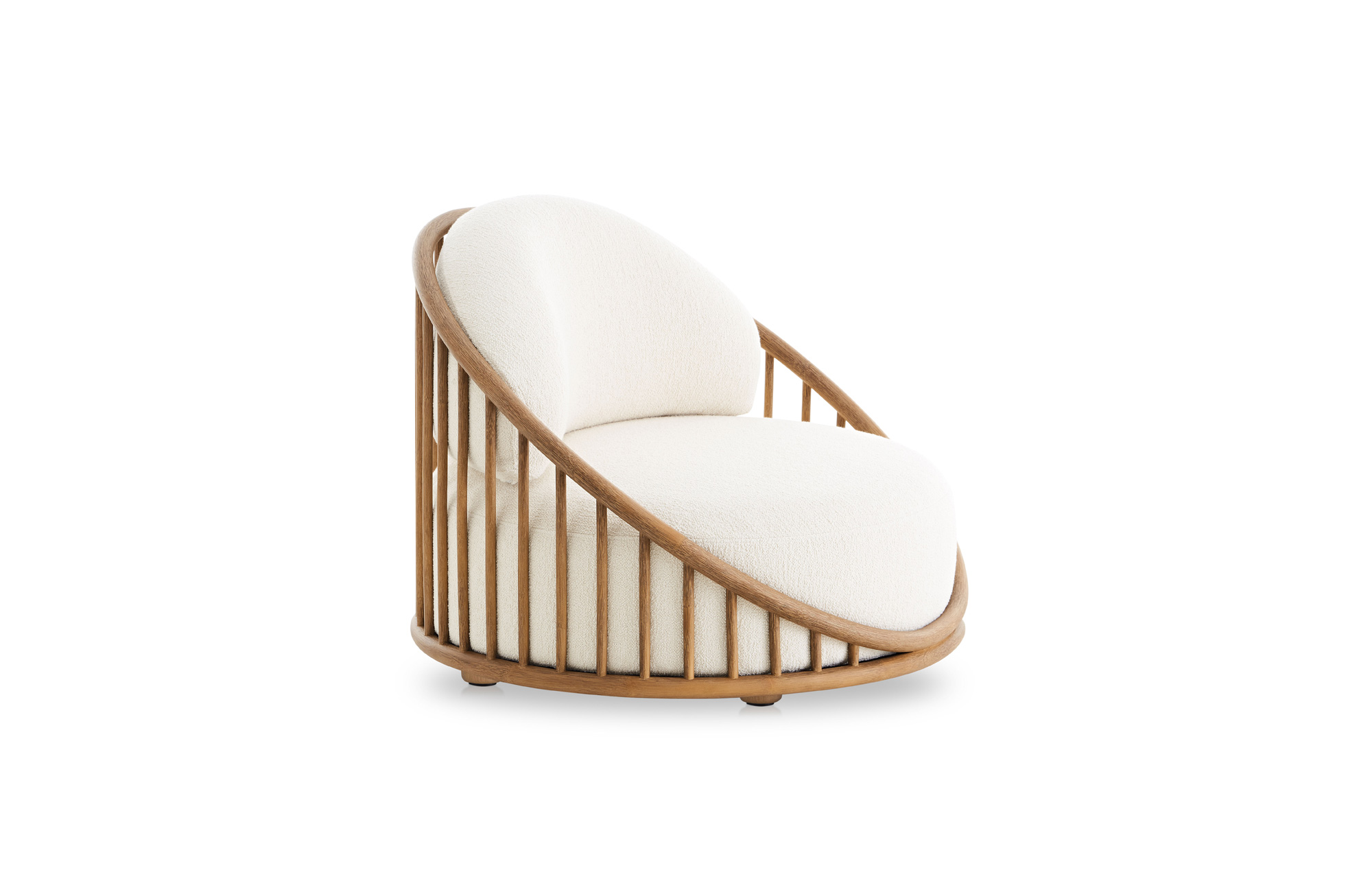
Cask Armchair
Norm Architects, the outstanding Danish architectural and design studio, designed the Cask Armchair for Spanish furniture brand Expormim. Since 1960, artisans at Expormim have worked with rattan to manufacture a lasting collection of indoor and outdoor furniture. The Cask Armchair is made using peeled and then tinted rattan: a series of vertical pieces connect two rounded forms. A sumptuous seat cushion and backrest complete the design while enhancing seating comfort. Designed in 2021, the visually striking Cask Armchair has the mark of a classic.
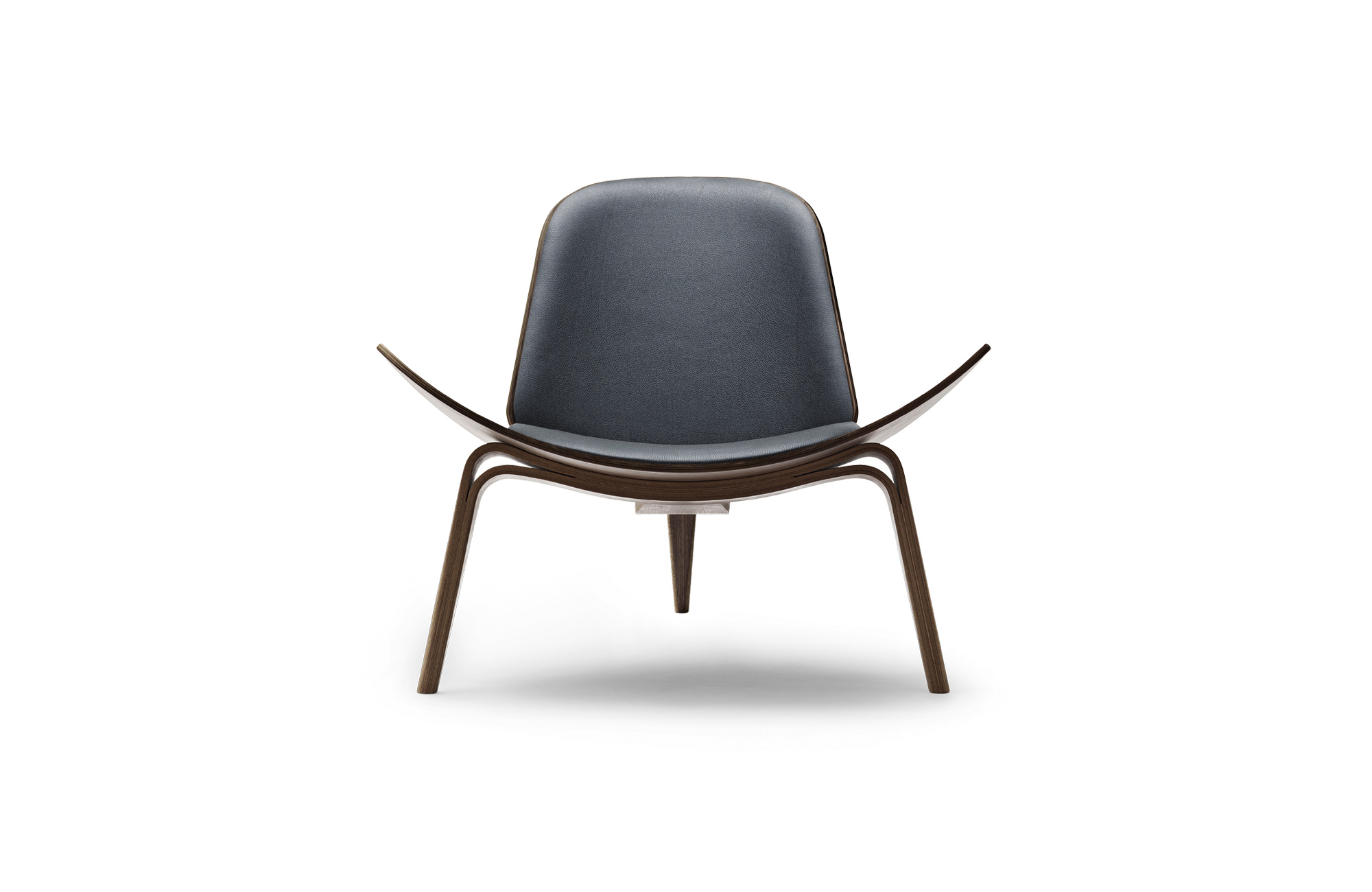
CH07 Shell Chair
Danish designer Hans J. Wegner designed his sculptural CH07 Shell Chair in 1963. Presented on 20th September 1963 at the Copenhagen Cabinetmakers’ Guild Exhibition—where it was quite unlike anything seen before—the Shell Chair received a mixed reception. Owing to the somewhat inferior production techniques of the time, only a limited number of these design chairs were made. In 1997, two of the original design chairs were auctioned at Sotheby’s in London, selling for £20,000 each. With renewed interest in the design, Carl Hansen & Søn reintroduced the Shell Chair in 1998: the iconic chair’s modern form was winning approval from a new generation of design aficionados. A wing-like seat, curved backrest, and three arched legs, combine to create a chair that embraces the sitter, both comfortably and securely. In the realm of iconic chairs, Wegner’s CH07 Shell Chair is a modern masterpiece.
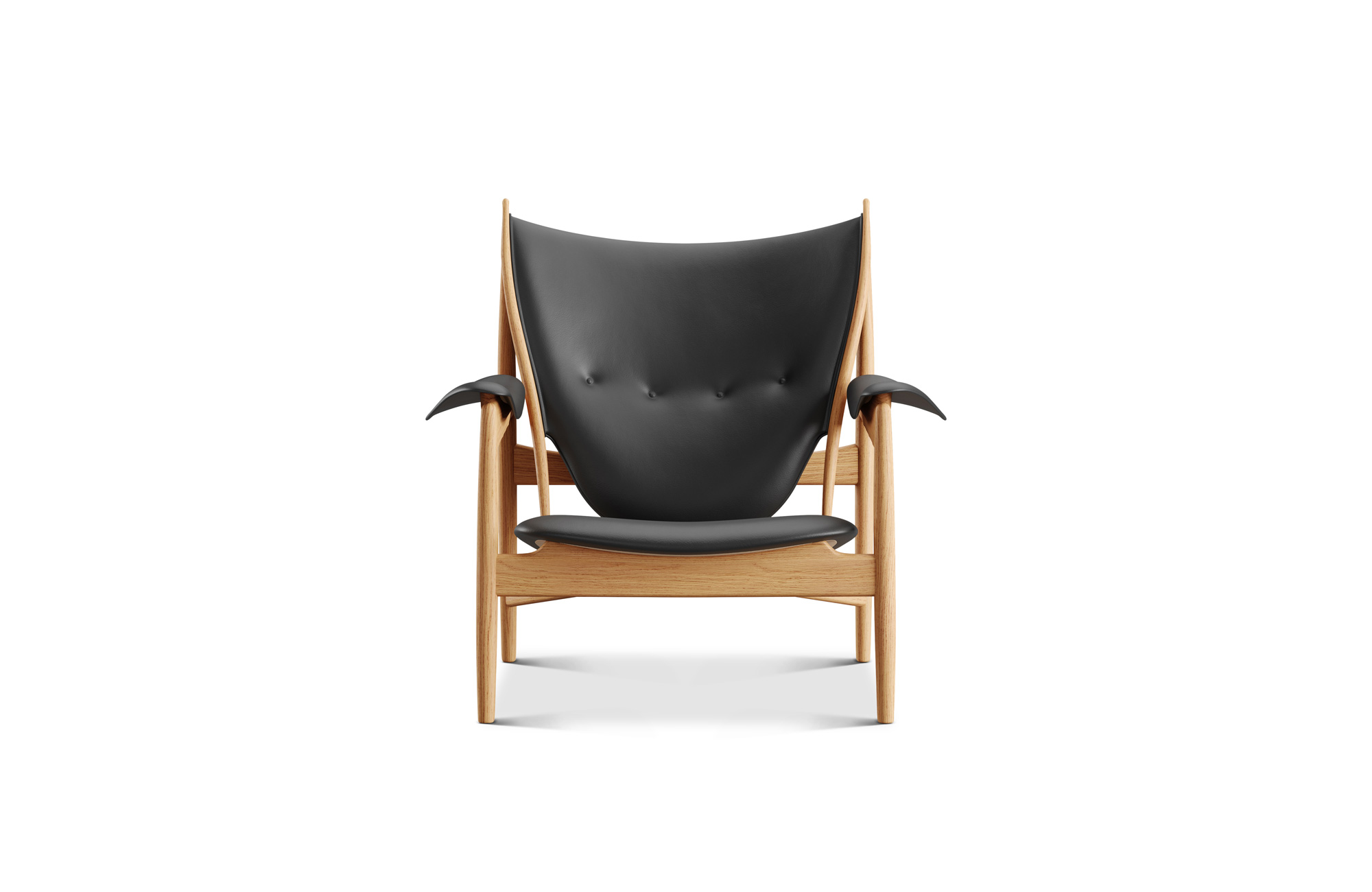
Chieftain Chair
In his 1949 Chieftain Chair, Danish architect and designer Finn Juhl achieved an outstanding example of modern design. The large and imposing chair received its name because Juhl considered its design to be somewhat pompous. Introduced at the 1949 Copenhagen Cabinetmakers’ Guild Exhibition, the Chieftain Chair’s status was elevated when the King of Denmark, Frederik IX, was photographed sitting in it. As with many of Juhl’s creations, the Chieftain Chair stands apart from traditional Danish furniture design. Juhl’s creative prowess was stimulated by art and he proclaimed: ‘Art has always been my main source of inspiration. I am fascinated by shapes which defy gravity and create visual lightness’. Made by House of Finn Juhl, the Chieftain Chair is a seat that truly elevates the art of sitting.
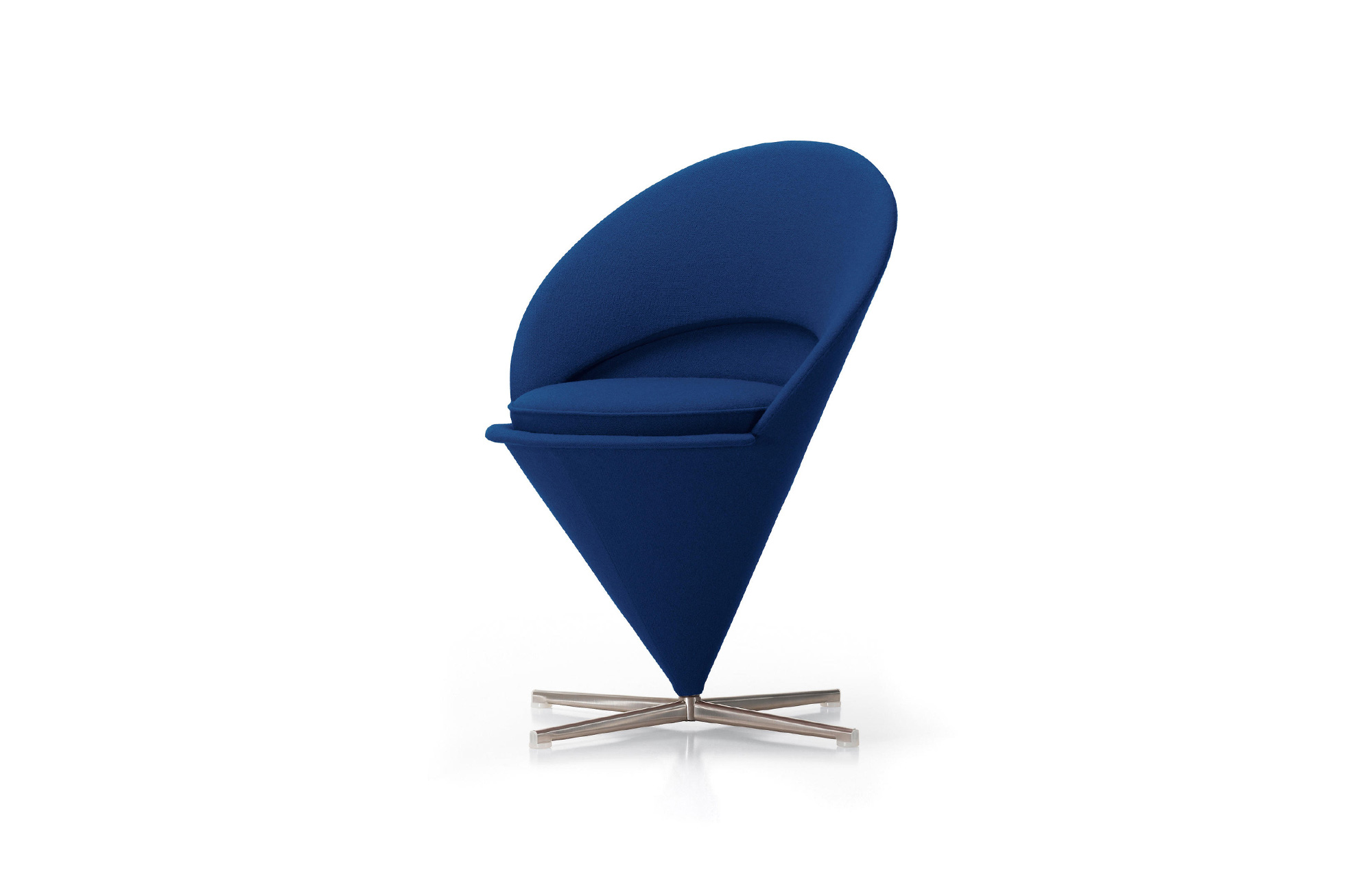
Cone Chair
Danish designer Verner Panton was celebrated for his inventive and novel ideas. In 1958, Panton was commissioned by his father, the manager of the restaurant Kom Igen on the island of Funen, Denmark, to refurbish the establishment’s interiors. Given free rein, Panton designed everything from the furnishings to the staff uniforms. One particularly notable design for Kom Igen was the Cone Chair. As with many of Panton’s creations, the chair had an eye-catching and futuristic profile.
Made in the shape of a cone, the chair is cleverly balanced on its tip. A slender four-star base provides excellent support. An exceptional design, the Cone Chair was originally produced in Denmark for the wider marketplace by Plus-Linje. As a fun fact, a Danish design entrepreneur established the company specifically for this chair. With Plus-Linje no longer in existence, the Cone Chair has been produced by Vitra since 2004.
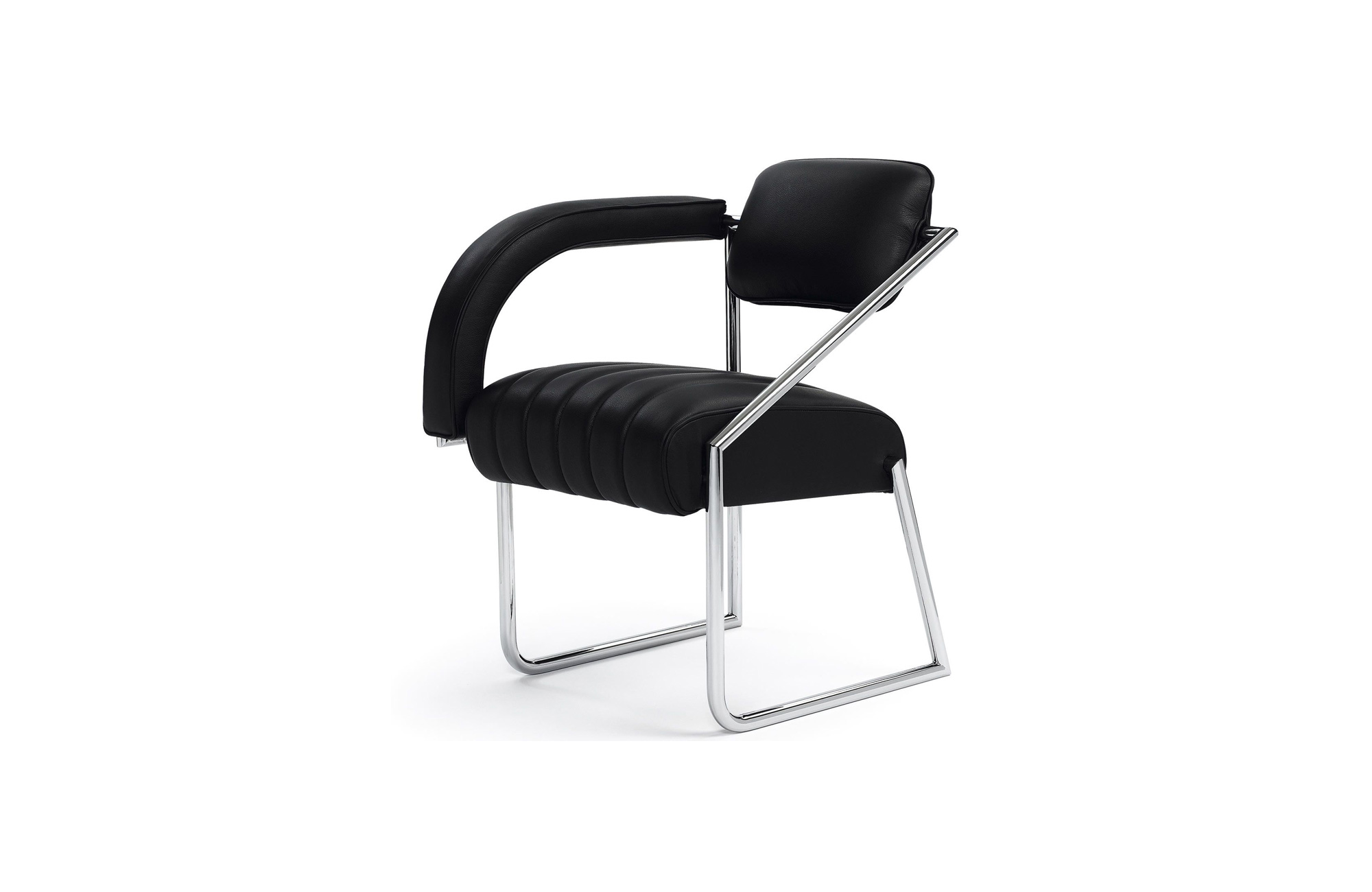
Gray Non Conformist Chair
A true pioneer of modernism, Irish designer Eileen Gray was a leading advocate for revolutionary new theories in design and construction throughout the 1920s and 1930s. Her asymmetrical E. Gray Non Conformist Chair (1926) is, perhaps inexplicably, both aesthetic and balanced in its irregular form and presentation. Gray explained: ‘An armrest was omitted in order to leave the body more freedom in movement and to allow it to bend forward or to turn to the other side unrestricted.’ In the spirit of its visionary designer, the Non Conformist Chair is a seat for the freethinker, individualist, misfit, or maverick. In 1973, Eileen Gray granted Aram Designs Ltd. the world-wide license to produce her designs, including these iconic chairs.
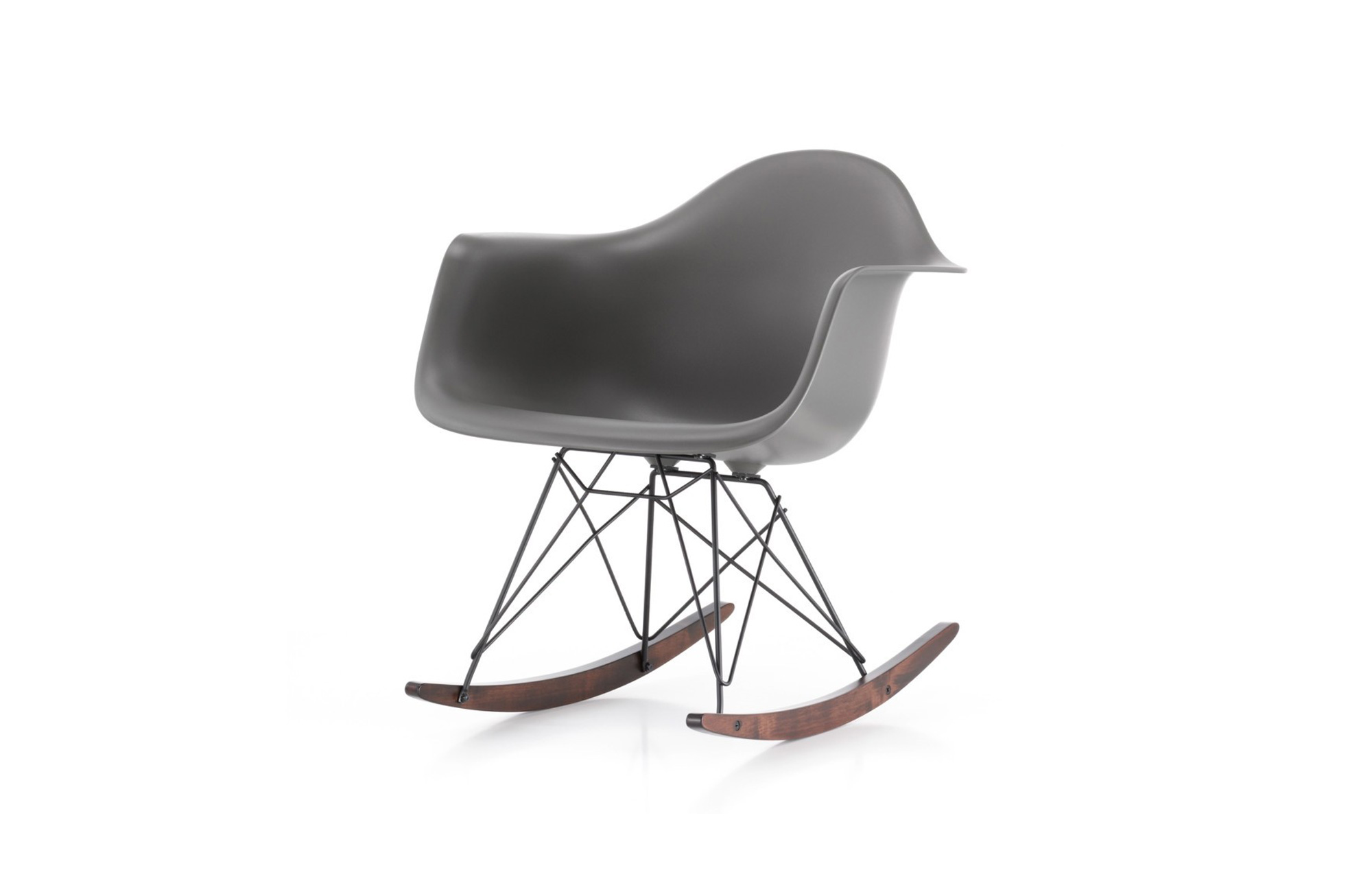
Eames Plastic Armchair RAR
In 1948, Charles and Ray Eames entered their design for a single-form shell chair made from stamped metal into the Museum of Modern Art’s ‘International Competition for Low-Cost Furniture Design’. The chair was awarded second place, however its metal shell was too expensive to produce. Undeterred, Charles and Ray explored the use of new materials to design chairs, including plastic reinforced with fiberglass. Organically-shaped, strong, and tactile, the Fiberglass Chairs were launched in 1950. These multifunctional chairs, a first of their kind, combined a series of striking bases, including the ‘Eiffel Tower’ base and a rocking chair base.
Manufactured by Hermann Miller since 1950 and Vitra since 1956, today the Eames Shell Chairs come in both polypropylene and fiberglass. The Eames Plastic Armchair RAR—Rocking Armchair Rod base—is an eye-catching member of the Eames family of shell chairs. For more than seven decades, its iconic silhouette has been much admired by legions of chair aficionados.
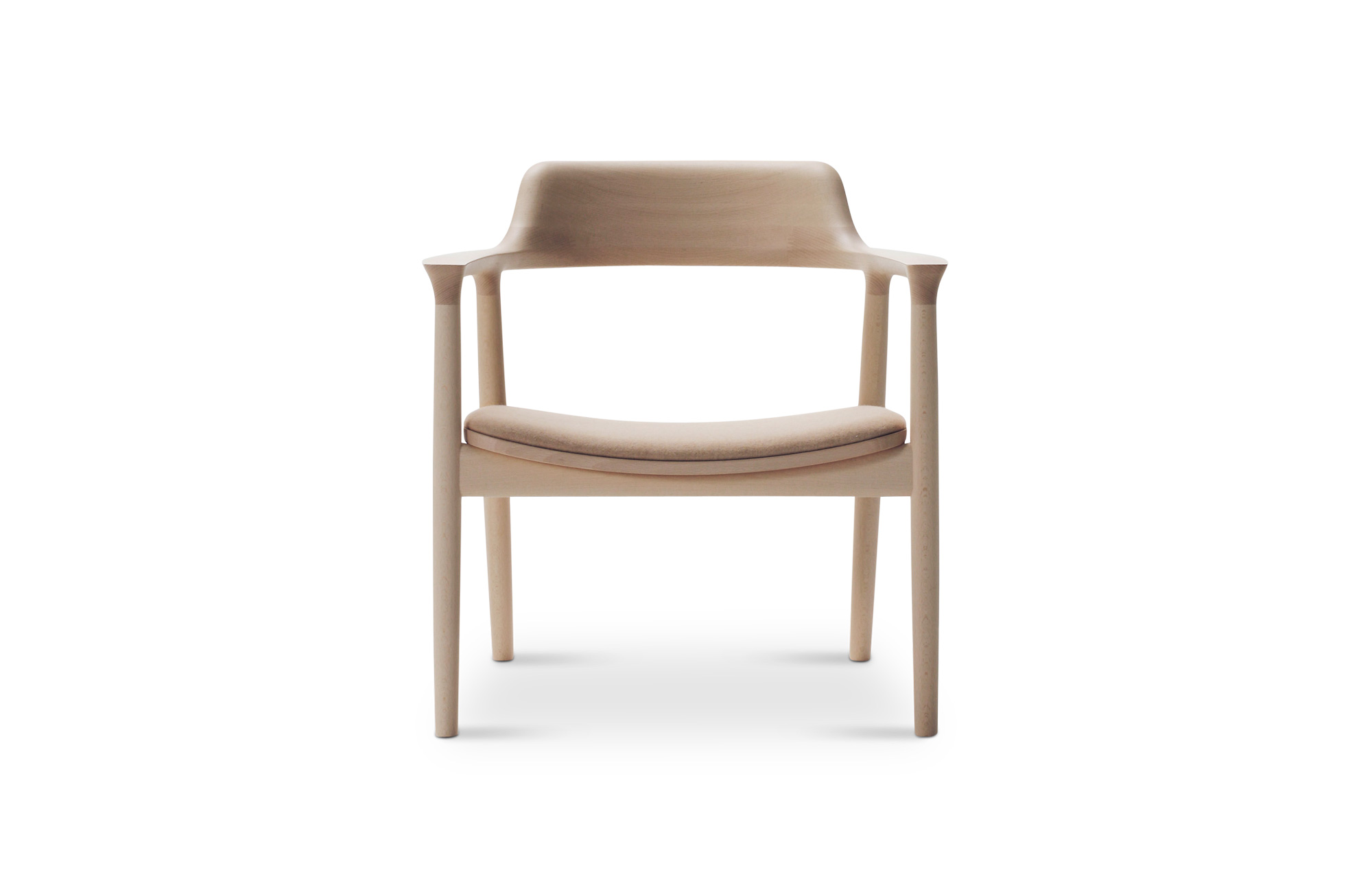
Hiroshima Lounge Chair
The celebrated Japanese product designer Naoto Fukasawa created the Hiroshima Lounge Chair for Maruni Wood Industry in 2008 (the company has been producing Japanese furniture since 1928). The chair, part of Fukasawa’s ‘Hiroshima’ series, reflects the Japanese aesthetic for simple, elegant, and functional designs made using wood. A gentle curve that extends from the chair’s floating backrest along both arms is visually appealing; it then gently invites the sitter to settle into its frame. Reflecting on his design for the Hiroshima Lounge Chair, Fukasawa explains: ‘What I aimed for in this chair was a refined and pure aura that at the same time has human warmth.’
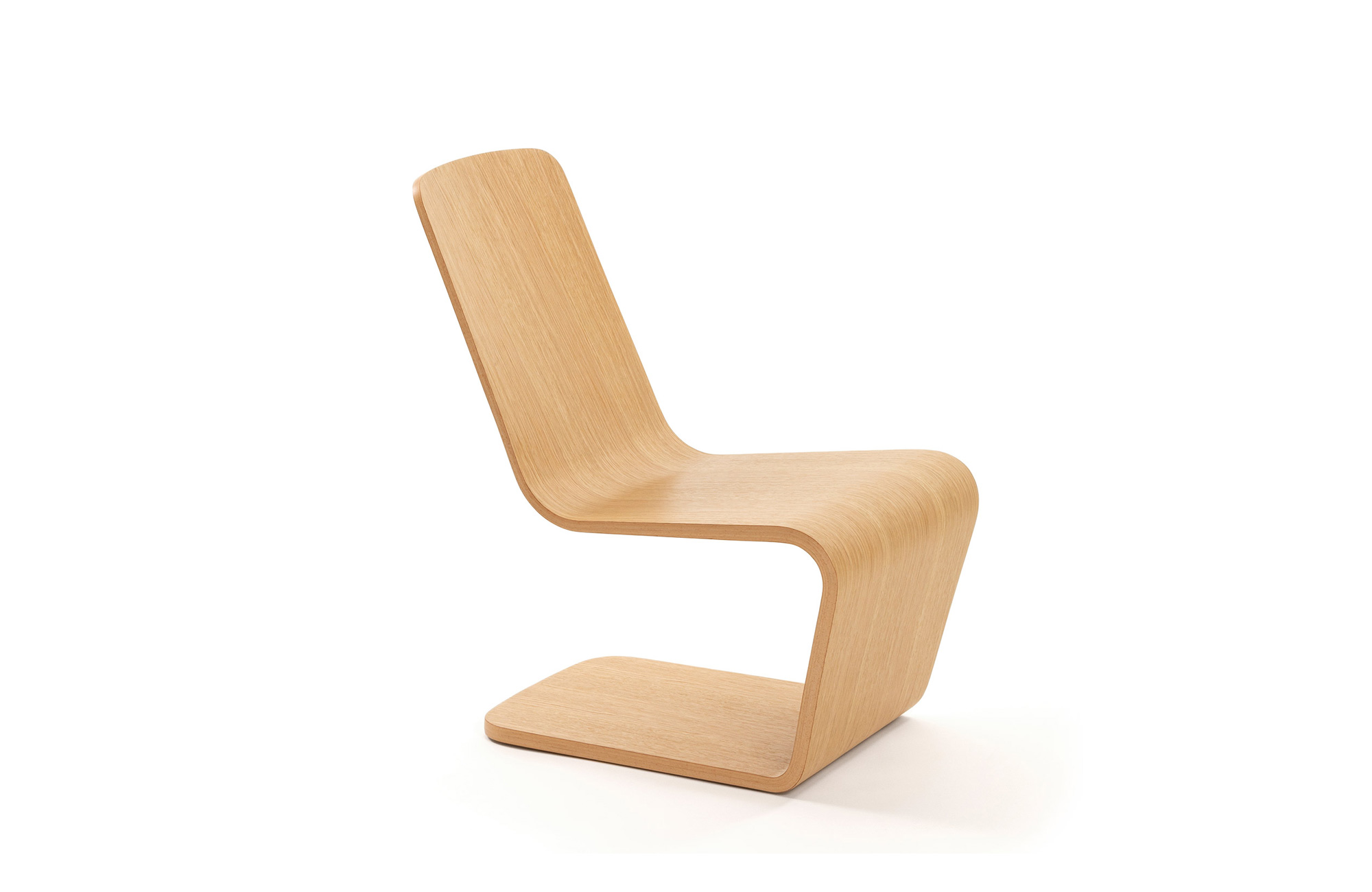
Iso-Lounge
Founded in 1931, Isokon (later remained Isokon Plus) has both its roots in British Modernism and a number of design classics under its belt (including the wonderful Penguin Donkey). In a recent addition to the Isokon Plus collection, British designer Jasper Morrison worked with Isokon’s team to create the cantilevered Iso-Lounge. Made with engineered plywood, this deceptively simple chair offers exceptional strength, support, and comfort. Furthermore, the Iso-Lounge strikes a balance between elegant and practical design.
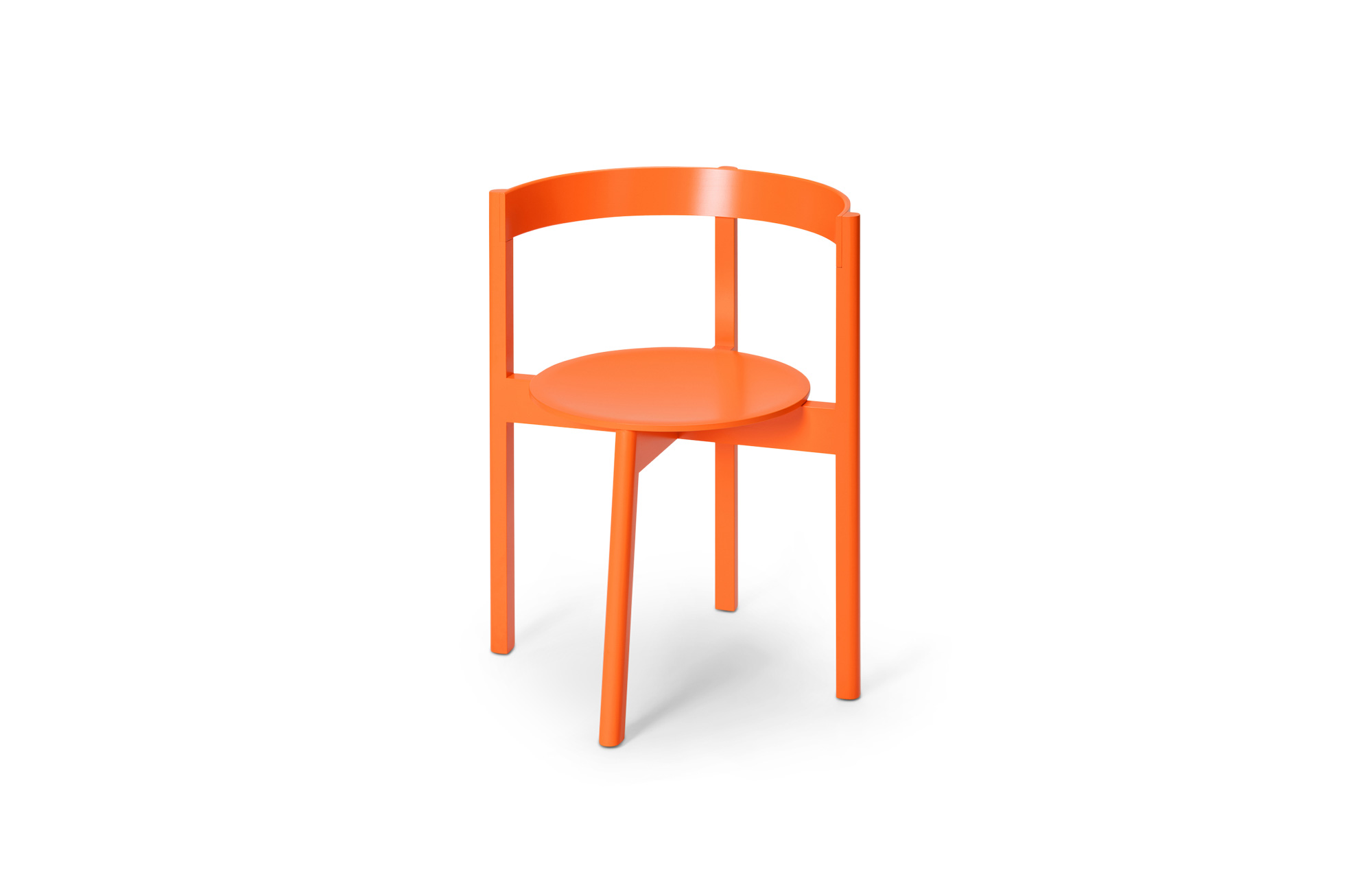
JAZZ armchair
Founded by David, Leon, and Julian Löhr, LOEHR is a Berlin-based design brand whose products are exclusively made in Germany. In its work, LOEHR aims to reduce furniture and objects to their essential forms, challenging our senses and perception. The JAZZ armchair is a somewhat unconventional interpretation of the modern dining chair. Made with a mix of plywood and solid wood, the JAZZ armchair has several faces depending on the viewing position. In side profile, the angled front leg is especially playful.
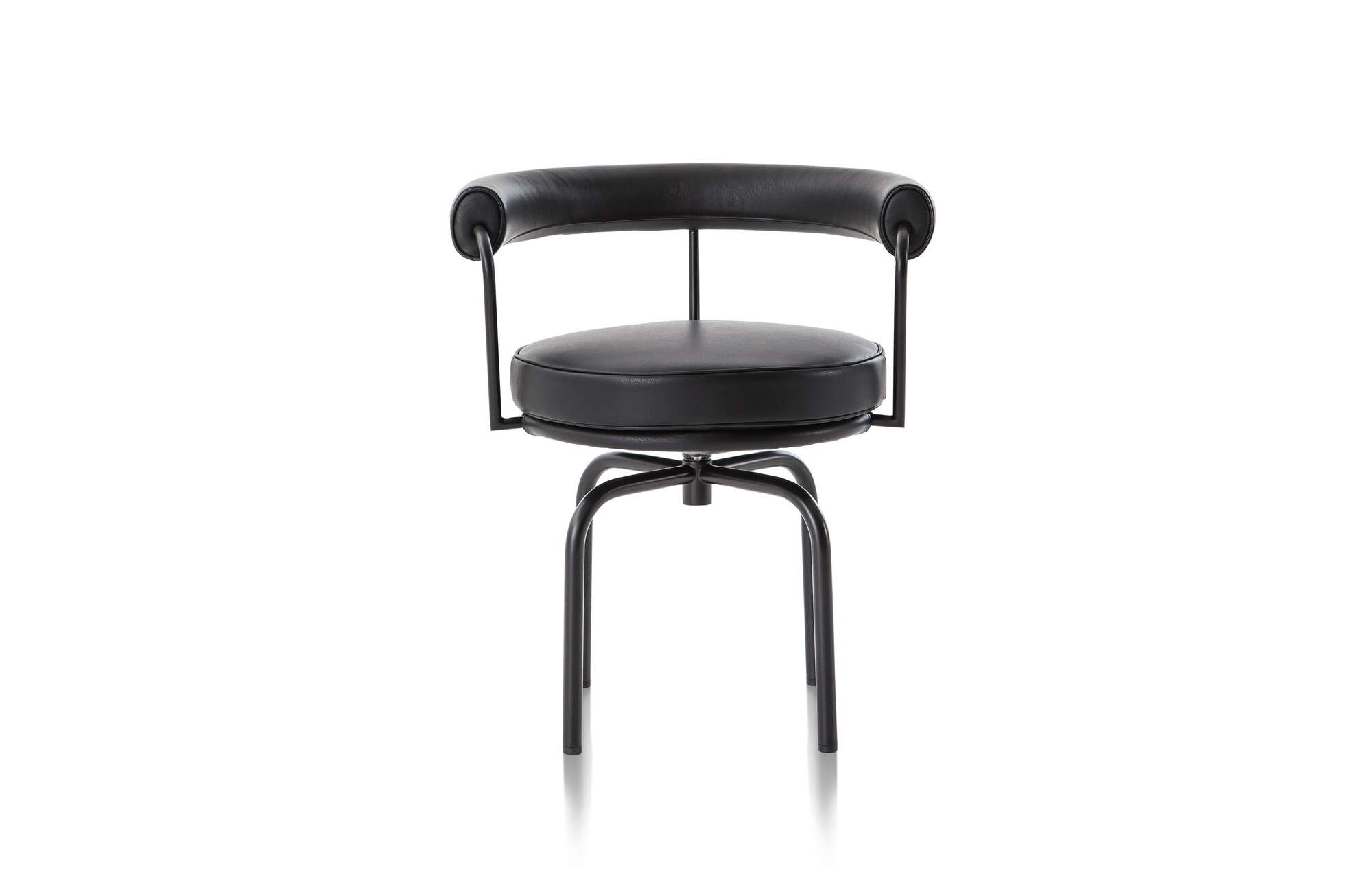
LC7 Siège Tournant, Fauteuil
The LC7 Siège Tournant, Fauteuil was designed by French architect and designer Charlotte Perriand in 1927 for her apartment in Place Saint-Sulpice, Paris. First showcased at the Salon des Artistes Décorateurs in 1928 and later at the Salon d’Automne in Paris in 1929, the iconic chair was integrated with the now famous LC collection (co-signed by Le Corbusier, Pierre Jeanneret, and Perriand). Versatile, functional, and highly original, the LC7 Siège Tournant, Fauteuil swivel chair is produced by Cassina.
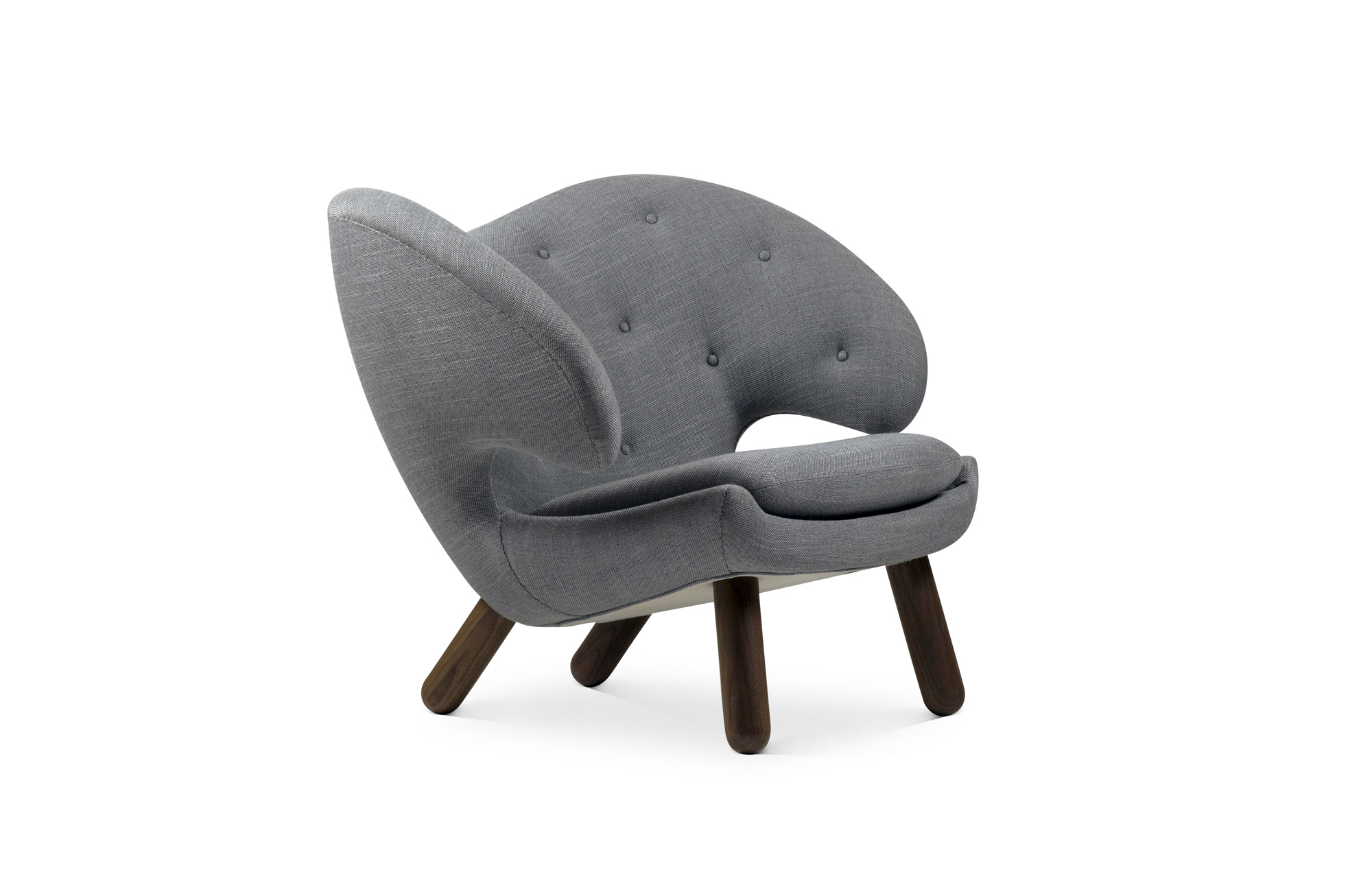
Pelican Chair
Finn Juhl’s Pelican Chair (1940) is perhaps his most outlandish design, and for many design pundits, his most creative. When presented at the Copenhagen Cabinetmakers’ Guild Exhibition in 1940, the chair stood out both with its curious shape and its sturdy, squat angled legs. Originally, Finn Juhl had ambitions to become an art historian. However, his father put paid to this notion. Instead, he enrolled at the Department of Architecture at the Royal Academy of Arts in Copenhagen. Juhl believed that modern furniture should make reference to contemporary art. The Pelican Chair was a perfect example of the way in which Juhl combined functionalism with art.
Dividing the critics with its organic shape, the Pelican Chair was produced in small numbers; in fact, it remained almost forgotten until House of Finn Juhl rediscovered and relaunched the winsome seat in 2001. At that time, Finn Juhl’s widow Hanne Wilhelm Hansen entrusted House of Finn Juhl with the exclusive rights to manufacture Juhl’s furniture. Considered a chair ahead of its time, the Pelican Chair sits easily in many contemporary spaces.
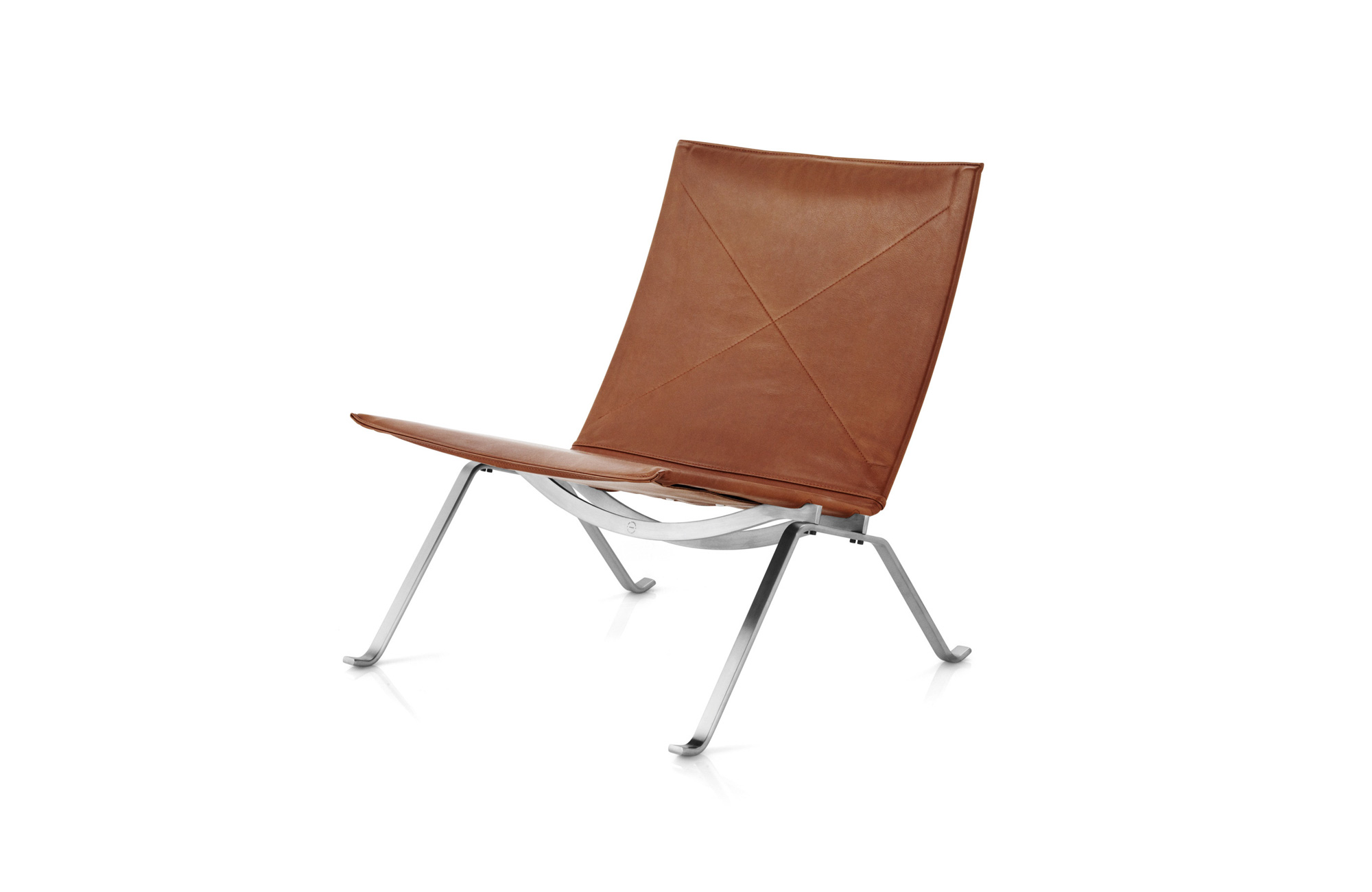
PK22™
Designed by Danish designer and cabinetmaker Poul Kjærholm in 1956, the PK22™ personifies Kjærholm’s quest for coherence in his designs: the chair emphasizes clarity of expression and purity of form. Kjærholm created furniture archetypes, reducing pieces to essential forms and so expressing the very notion of a chair or table. In 1957, the PK22™ was awarded the Grand Prix at the Triennale di Milano. Representing the quintessence of modern design construction, the PK22™ is one of the many iconic chairs produced by Fritz Hansen.
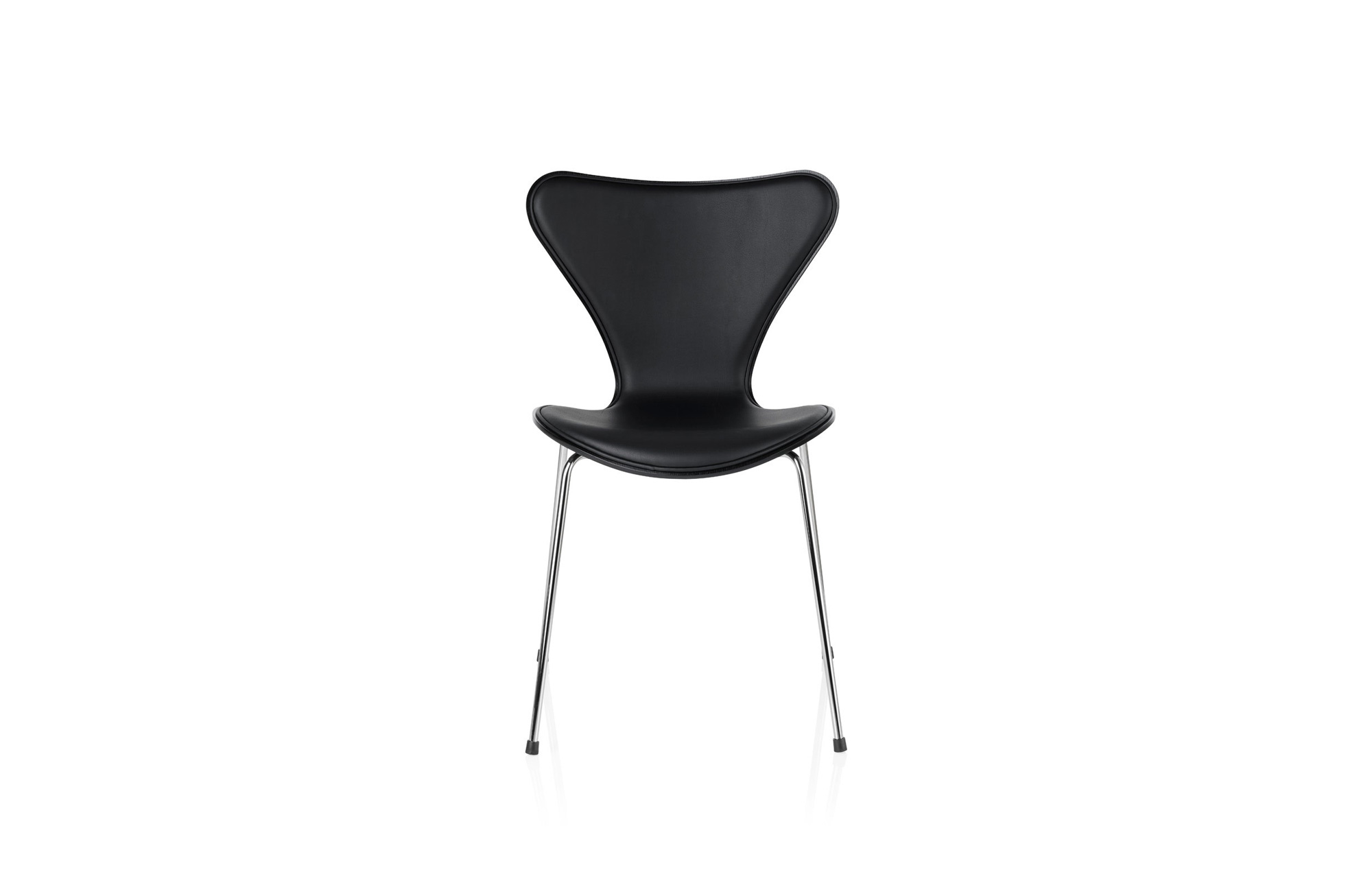
Series 7™
It is arguable that few chair designs have enjoyed the fame and prestige bestowed on Arne Jacobsen’s Series 7™. Designed in 1955 and produced by Fritz Hansen, this instantly recognizable icon of mid-century design is also the Danish company’s most popular chair. With its light, curvy profile and four-legged chrome base, the Series 7™ continues to enthrall lovers of modern design. Featuring nine layers of pressure-molded veneer, the Series 7™ is durable, versatile, and prolific (in both numbers sold and variations).
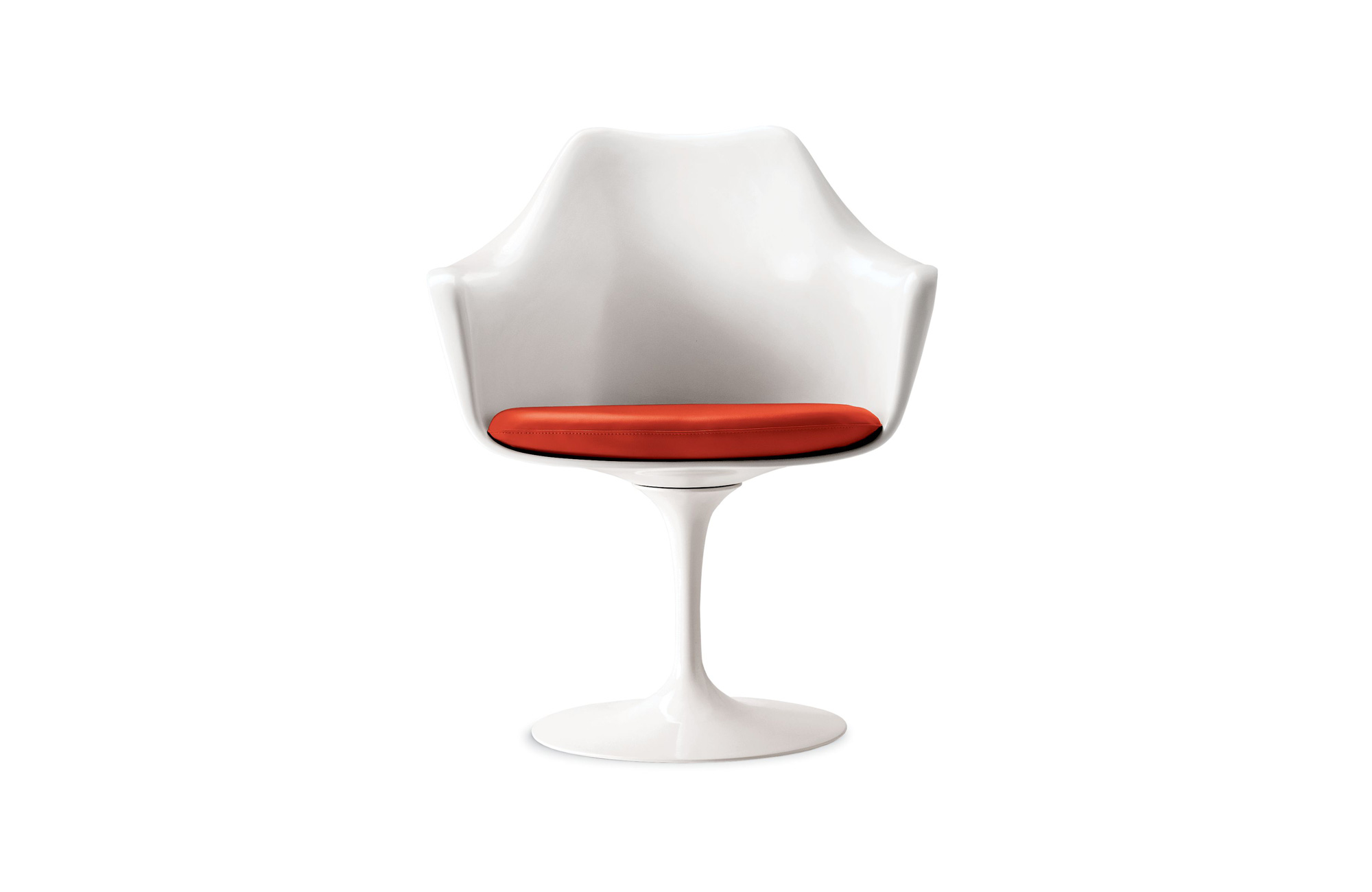
Tulip Chair
Finnish-American architect Eero Saarinen designed the Tulip Chair in 1957. A part of the ‘Pedestal Collection’, its base dealt with Saarinen’s objection to the ‘ugly, confusing, unrestful world’ found beneath tabletops and chairs. Having trained as a sculptor, Saarinen refined his design using both small-scale and full-scale models. He also worked closely with Knoll to ensure the chair was ready for production. With its futuristic shape and flute-like swivel base, the Tulip Chair is an enduring design classic.


